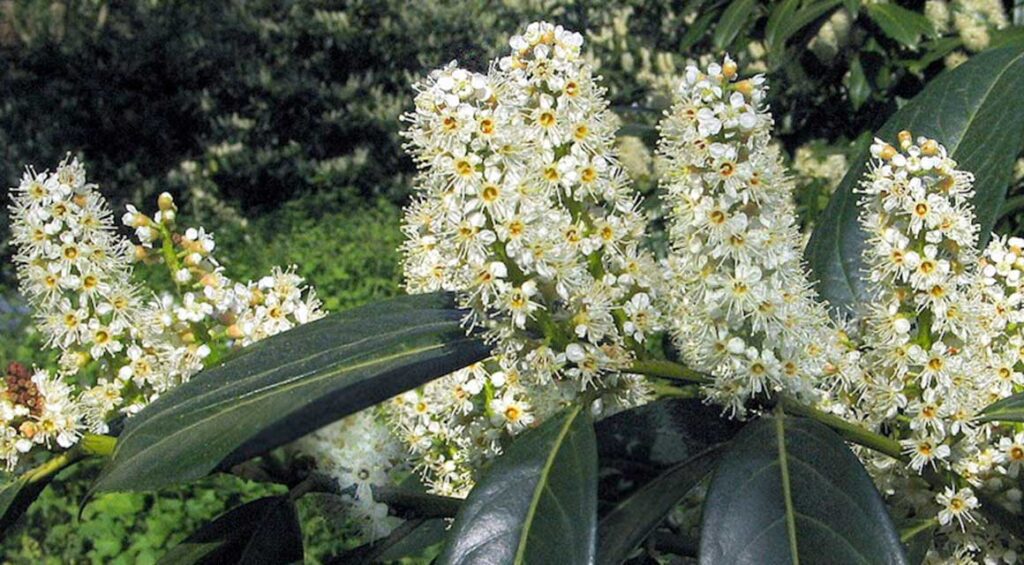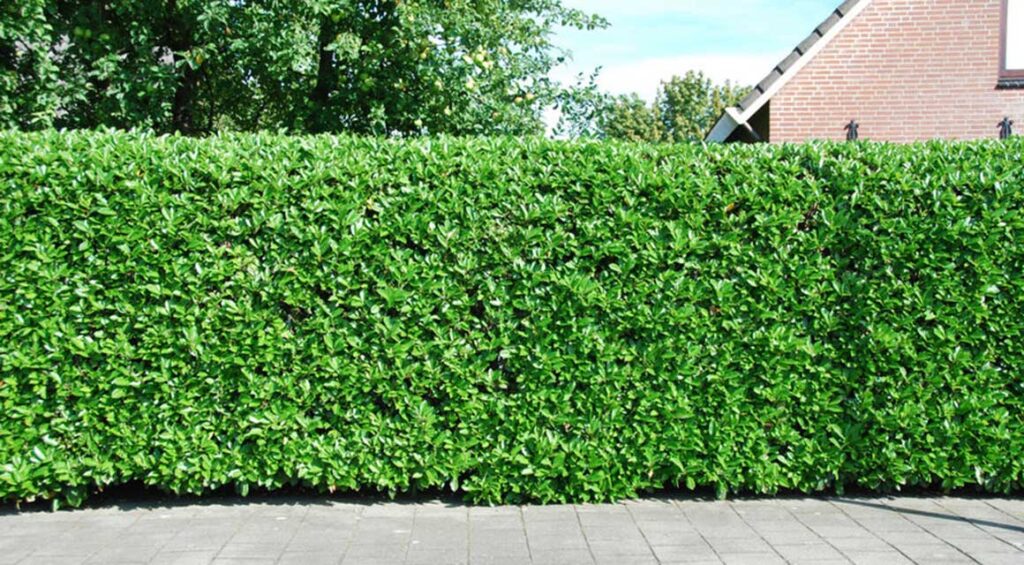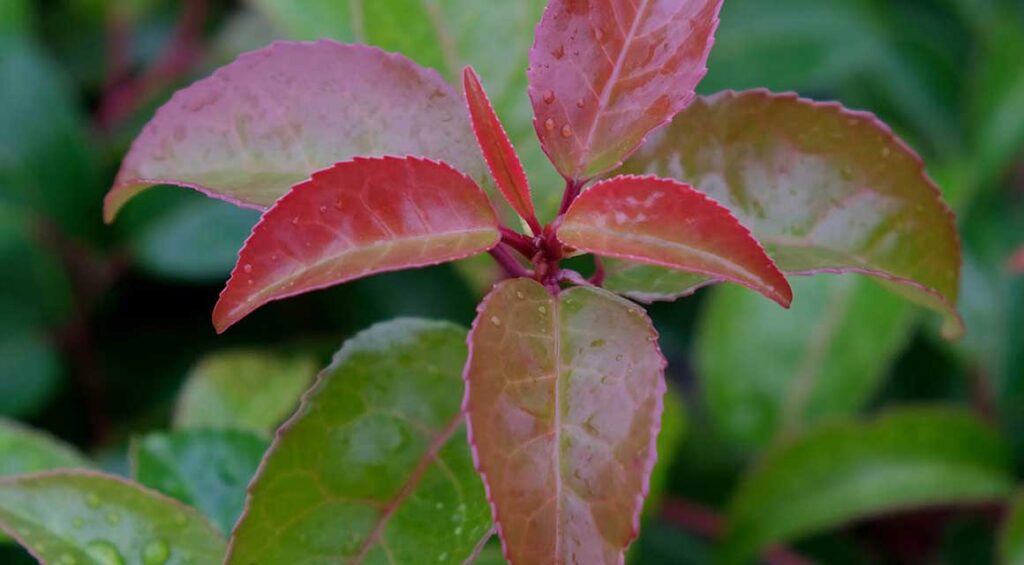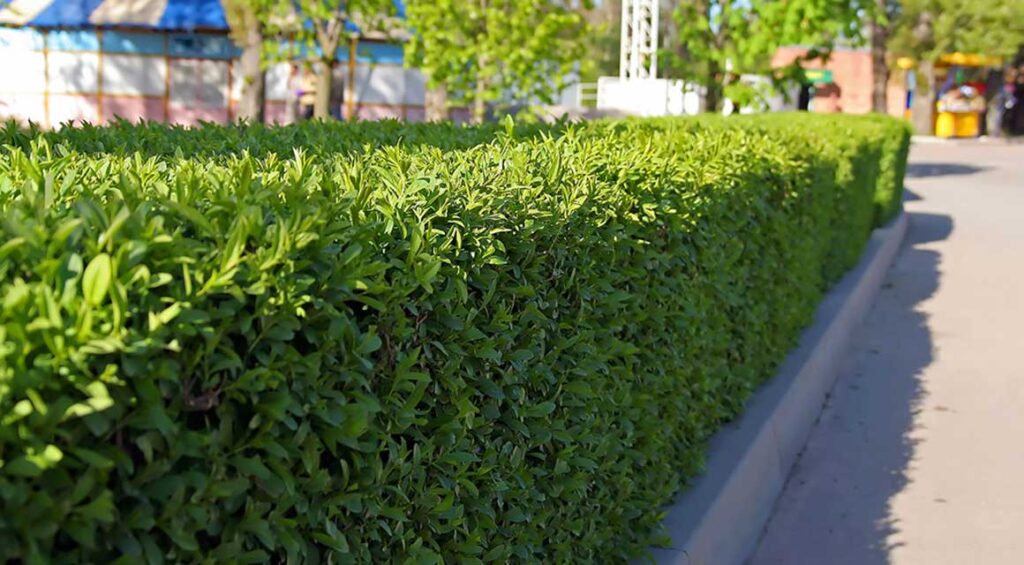Cherry laurel is one of the hedge plants from our assortment, which is especially often planted in our gardens. By the way, it is also known as laurel cherry or Prunus laurocerasus. This great popularity, of course, has good reasons, so we will gladly inform you about the reasons why the cherry laurel is so exceptional. Perhaps the cherry laurel hedge is also a suitable option for your garden.

Contents
A different look than other evergreen hedge plants.
When you choose evergreen hedge plants, you do it mainly to get more privacy in the garden. It is then especially important that the hedge stays green all year round and grows tall enough. Most evergreen hedge plants, think here also of conifers, are much prettier than a garden fence or than a stone wall. Nevertheless, evergreen hedges are also not particularly varied. The cherry laurel, however, has a very different look than most other evergreen hedge plants. With its large, oval-shaped leaves that have a wonderful sheen on the top of the leaves, the cherry laurel can become a radiant focal point in any garden.
In addition, the cherry laurel has a very different growth habit than other colorful hedge plant varieties. The taller cherry laurel varieties grow tall and compact enough to be used as privacy hedges, but a cherry laurel hedge is much less formal in this regard. In fact, cutting a cherry laurel hedge is not done to give such a hedge a tight shape. That would mean damaging the beautiful cherry laurel leaves. However, cherry laurel leaves contribute greatly to making cherry laurel hedges look so pretty. So the cherry laurel, which by the way can grow quite wide, usually has a more informal character. Its leaves need a little more space, but they are particularly decorative for it.
Thus, a cherry laurel hedge has a completely different appearance than a yew hedge or a thuja hedge. Even compared to less formal evergreen varieties, think here of the holly or the firethorn, the cherry laurel is still relatively informal. Only the Japanese aukube looks similar to a cherry laurel, because it has shiny yellow dotted leaves.

There are many variations of cherry laurel available
Many hedge plants are usually available only in a few variations. If such a plant then does not fit into your garden format or if your hedge should have a certain height, then the choice becomes smaller and smaller. However, a cherry laurel is particularly versatile, so there is bound to be a suitable cherry laurel for every garden. Most garden owners prefer taller cherry laurel hedges, think ‘Rotundifolia’ cherry laurel or ‘Novita’ cherry laurel here. These varieties can grow tall enough to become opaque over time, although they take up a lot of space in the garden in terms of width.
However, that doesn’t mean you should look for another hedge plant variety. Do you prefer informal privacy hedges even though your garden is a bit smaller? Then take a closer look at the cherry laurel ‘Genolia’®, which is much narrower than other tall cherry laurel varieties due to its striking growth. Or do you prefer a slightly smaller cherry laurel hedge? Then specially bred varieties, such as the ‘Otto Luyken’ cherry laurel or the ‘Zabeliana’ cherry laurel, are ideal options. The cherry laurel ‘Herbergii’ and the somewhat more subtle cherry laurel ‘Caucasica’ are also two striking, flowering varieties that are also available in our range.

Fast growing and extremely easy to care for
Higher varieties of cherry laurel, by the way, have a fairly fast growth; in fact, most varieties have an annual growth of 40-60 cm. As a result, one might think that such cherry laurel hedges would need a lot of pruning to keep their shape better, but actually these are very low-maintenance hedge plants. One pruning per year is therefore already sufficient to give fast-growing cherry laurel hedges a pretty appearance. This is mainly due to the fact that a straight cut, tight appearance does not actually suit a cherry laurel hedge; a somewhat more natural look is then much more appropriate.
However, the Portuguese Cherry Laurel (Prunus lusitanica ‘Angustifolia’) and the Cherry Laurel ‘Tico’ need a bit more attention. However, this has mainly to do with the planting of these hedges. Therefore, during the first year after planting, good care should be taken to ensure that the garden soil remains slightly moist at all times. However, once these two plants are well rooted, then they are also immediately as easy to care for as other varieties of cherry laurel. Use smaller hedge shears for pruning, however, because larger garden shears or hedge clippers can quickly cut cherry laurel leaves, creating unsightly spots in your cherry laurel hedge.

The cherry laurel can cope well with almost everything.
Of course, there are always certain conditions that are less favorable for hedge plants. Think here, for example, prolonged drought, which we had last summer. But also think about the particulate matter in the air, which is especially prevalent in large cities. The cherry laurel, for example, has no problems at all with such conditions. So, in hot and dry conditions, you should water your cherry laurel hedge sufficiently, when the roots of the cherry laurel are surrounded by a dry garden soil. However, the leaves of the cherry laurel are strong and vigorous, so they will not discolor quickly even in these conditions. Do you have a calcareous garden soil? No problem!
However, cherry laurel roots should not grow under water for a long time, because a cherry laurel can not cope with this at all well. This also applies to almost all hedge plants. The hornbeam and the ancient sequoia are then among the few hedge plants in our range that can still grow well under such soil conditions. So make sure that the water from your garden soil can drain away well at all times before you plant a new cherry laurel hedge in your garden. Good drainage of your garden soil can already be realized by adding more holes to the bottom of the planting holes, so that the excess water can seep away faster. In addition, the Portuguese cherry laurel is somewhat sensitive to wind.


